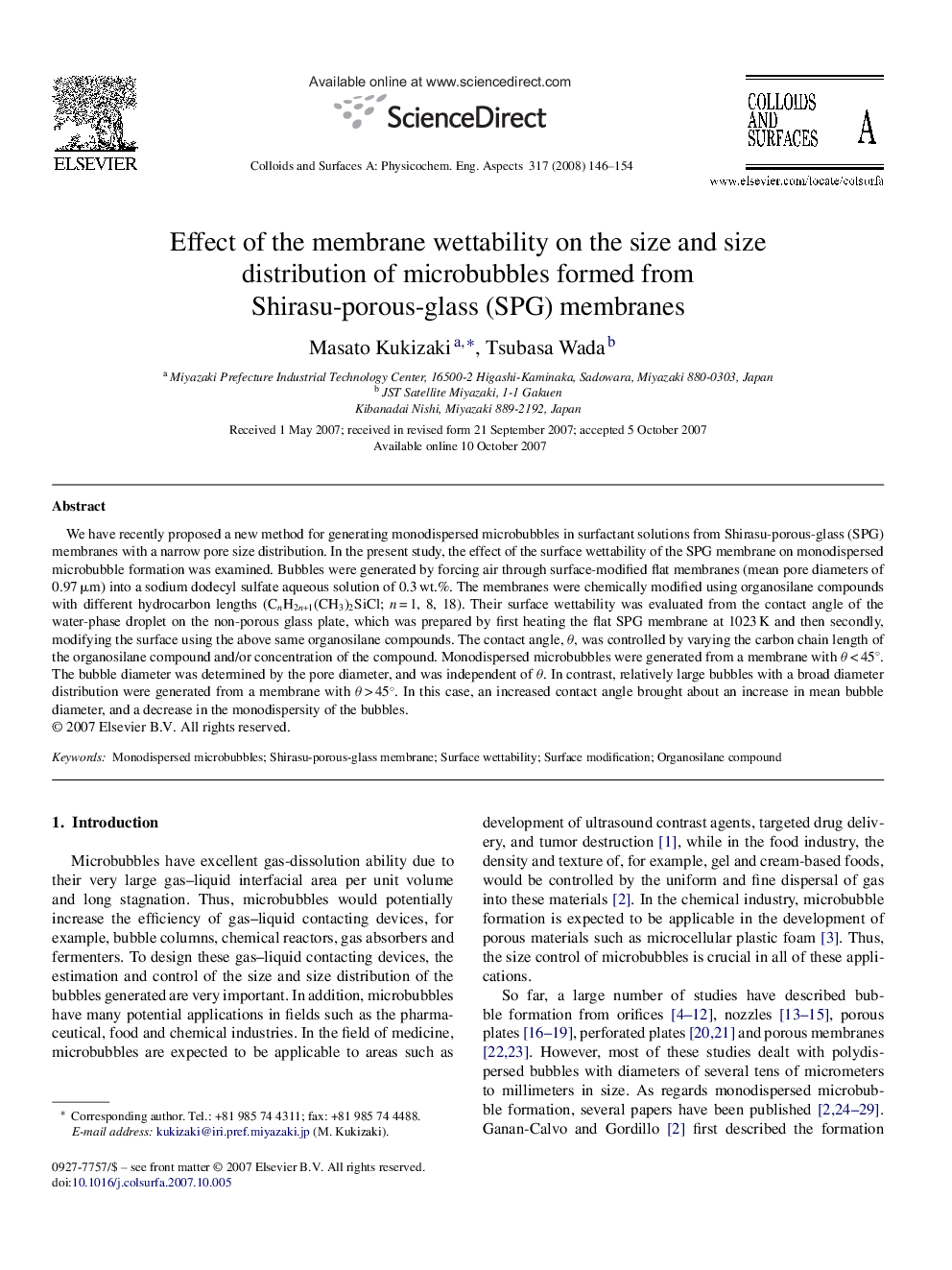| Article ID | Journal | Published Year | Pages | File Type |
|---|---|---|---|---|
| 596784 | Colloids and Surfaces A: Physicochemical and Engineering Aspects | 2008 | 9 Pages |
We have recently proposed a new method for generating monodispersed microbubbles in surfactant solutions from Shirasu-porous-glass (SPG) membranes with a narrow pore size distribution. In the present study, the effect of the surface wettability of the SPG membrane on monodispersed microbubble formation was examined. Bubbles were generated by forcing air through surface-modified flat membranes (mean pore diameters of 0.97 μm) into a sodium dodecyl sulfate aqueous solution of 0.3 wt.%. The membranes were chemically modified using organosilane compounds with different hydrocarbon lengths (CnH2n+1(CH3)2SiCl; n = 1, 8, 18). Their surface wettability was evaluated from the contact angle of the water-phase droplet on the non-porous glass plate, which was prepared by first heating the flat SPG membrane at 1023 K and then secondly, modifying the surface using the above same organosilane compounds. The contact angle, θ, was controlled by varying the carbon chain length of the organosilane compound and/or concentration of the compound. Monodispersed microbubbles were generated from a membrane with θ < 45°. The bubble diameter was determined by the pore diameter, and was independent of θ. In contrast, relatively large bubbles with a broad diameter distribution were generated from a membrane with θ > 45°. In this case, an increased contact angle brought about an increase in mean bubble diameter, and a decrease in the monodispersity of the bubbles.
